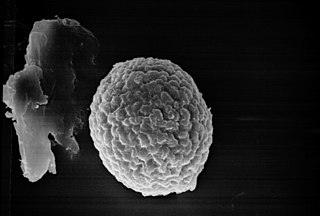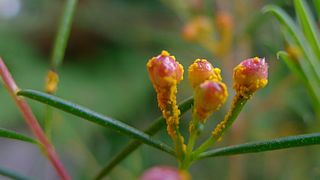
Tilletia is a genus of smut fungi in the Tilletiaceae family. Species in this genus are plant pathogens that affect various grasses. Tilletia indica, which causes Karnal bunt of wheat, and Tilletia horrida, responsible for rice kernel smut, are examples of species that affect economically important crops.

Pucciniastrum is a genus of Basidiomycota fungi. Pucciniastrum species, like all rust fungi, are obligate plant parasites.
Maravalia is a genus of rust fungi in the Chaconiaceae family. The widespread genus contains about 35 species that grow on angiosperms.

Chrysomyxa is a genus of rust fungi in the family Coleosporiaceae. The genus, widespread in the Northern Hemisphere, contains about 23 species. Rust fungi in the genus Chrysomyxa occur in boreal forests of the northern hemisphere on Pinaceae,, and most species alternate to angiosperm hosts in the Ericaceae.
Pucciniosira is a genus of rust fungi belonging to the family Pucciniosiraceae.
Uredo is a genus of rust fungi: long considered incertae sedis in the order Pucciniales, but now placed in the family Pucciniaceae. This long-established genus, together with the closely-related Uromyces, give their names to "uredo-type" fungal spore structures such as "urediniospore" and uredinium".

The Sphaerophragmiaceae are a family of rust fungus genera in the order Pucciniales, based on the type genus Sphaerophragmium and placed in the suborder Uredinineae.




